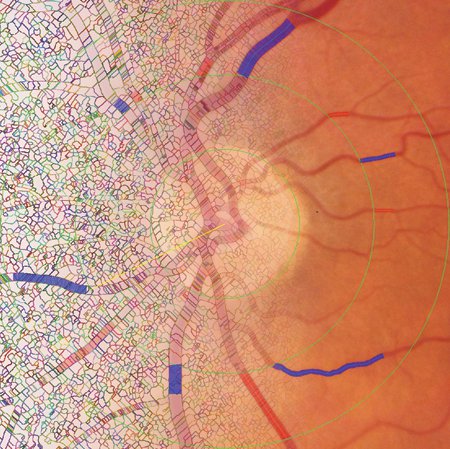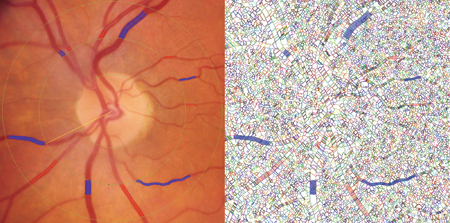Image compression, resolution may compromise retinal vascular caliber measurement
Study recommends a spatial resolution of at least 5 megapixels and image compression ratio of less than 25:1.
With the advent of digital photography, retina image quality may be compromised because of variations in image compression and resolution, according to a study.
Comparing the calculated central retinal arteriole equivalent and the central retinal venular equivalent of original and altered images, investigators found that measurements were adversely impacted when the compression ratio was more than 25:1 and the resolution was less than 5 megapixels.
In a study published in Investigative Ophthalmology & Visual Science, 40 high-quality digital fundus images randomly selected from various studies were compressed at nine ratios and scanned at five resolution settings using Adobe Photoshop.
Changes in measurement
“At 25:1 JPEG compression, we started seeing significant changes in the caliber measurements,” study co-author Ronald P. Danis, MD, said. “It is not surprising that these artifacts emerge. But what are the limits of the tolerance? It turns out that we need to have very good quality images for the results to be consistent. An image quality issue can change the measurement by only a few microns, but this is enough to change the results of an analysis.”

Ronald P. Danis
Historically, most of the data for retinal vascular caliber measurements have come from digitized color-slide film images.
“Those images can provide maximal resolution because of the way we scan images,” Danis said. “But newer data being collected is not likely to be on film anymore. Therefore, we are seeing more variability in the way images come to us for analysis.”
Danis said there are many digital data sets from telemedicine screening programs, for example, or from other epidemiological studies.
“We want to compare the measurements across populations and for different diseases,” he said. “It is important then to look at the underlying potential artifacts that occur, depending on how the digital images were acquired. Not surprisingly, if you compress images too much or if the resolution is not adequate, we do see changes in the way the program is measuring the images.”
Resolution and compression
It is important for published data to state the image resolution and what kind of compression was used.
“We may not be able to account for any discrepancy, but at least if there are differences between populations, we have some handle on what some of the underlying artifacts could contribute to that,” Danis said.
Modern cameras generally have adequate resolution of at least 5 megapixels, according to Danis, and that is the minimum resolution that the study recommends.
“But compression remains a big issue,” he said. “Sometimes the compression is pretty radical and it is much greater than 25 to 1.”

A blended image of color fundus and "splats" images from IVAN software.
Images: Danis RP

Side-by-side view of the color fundus and the splats with vessels drawn.
Images are often compressed to transmit over the Internet or for data storage efficiency.
“This can have an effect, so we need to be careful how we compress the images,” Danis said. “It is important that the methodology not change from baseline to follow-up evaluations, because that can produce changes in our measurement,” Danis said.
Retinal vascular caliber can be a marker for a variety of systemic and ocular changes.
“For example, vascular caliber measurement has been predictive of progression of diabetic retinopathy and development of hypertension and for incident cardiovascular and cerebral vascular disease,” Danis said.
Nearly 20 years ago, IVAN software for retinal vascular caliber measurement was developed at the University of Wisconsin, and it continues to be freely distributed today.
“This has led in part to the wonderful dissemination of the methodology and its use amongst a multitude of different studies around the world,” Danis said. – by Bob Kronemyer
Reference:
- Pauli TW, Gangaputra S, Hubbard LD, et al. Effect of image compression and resolution on retinal vascular caliber. Invest Ophthalmol Vis Sci. 2012:53:5117-5123.
For more information:
- Ronald P. Danis, MD, can be reached at Fundus Photograph Reading Center, Department of Ophthalmology and Visual Sciences, University of Wisconsin-Madison, 8010 Excelsior Drive, Suite 100, Madison, WI 53717; 608 410-0627; email: rpdanis@wisc.edu.
- Disclosure: Danis has no relevant financial disclosures.
